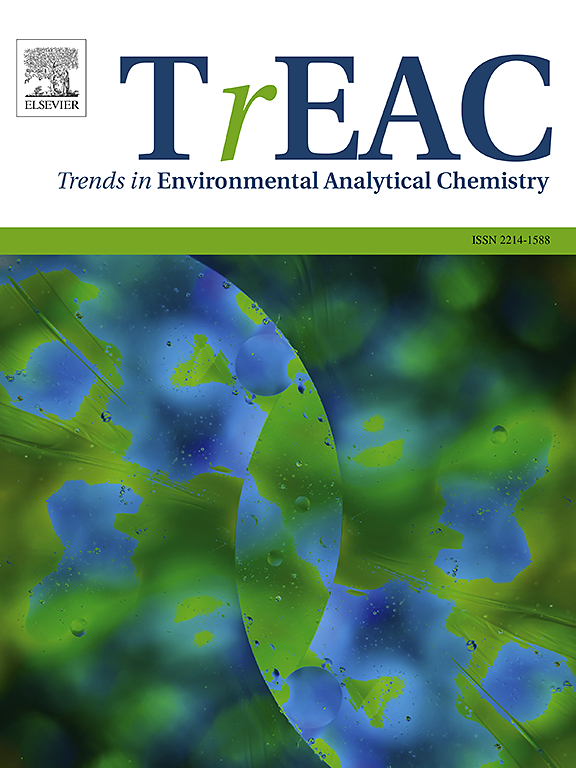Redefining nanobiosensors in rapid detection of viral infections: Where are we now?
IF 11.1
2区 化学
Q1 CHEMISTRY, ANALYTICAL
引用次数: 0
Abstract
The development of nanobiosensors has conquered immense attention of the scientific community owing to the recent events of outbreaks. Highly targeted and responsive detection of viruses plays a crucial role in accurate and timely diagnosis of viral infections. Regardless of the numerous efforts to detect viruses, the diagnosis of viral diseases yet relay on costly and time-consuming assays. Currently, PCR based assays are frequently used methods for the detection of viral illnesses further allowing the precise diagnosis of various diseases but these techniques still suffer several limitations including long time to get results and the need for experts to run. As alternative approaches, low-cost nanobiosensors are rapid and trustworthy diagnostic systems for point-of-care diagnosis because of their high sensitivity and selectivity. Biosensing methodologies ensure sensitive and specific detection, recognition, and quantification of pathogens. Viruses can have severe economic repercussions due to its high transmissibility and rapid proliferation, which can have a significant impact on both individual and collective health. Herein, after introduction, we have summarized key contributions regarding the development in nanobiosensors for detection of viral infections induced by respiratory viruses including MERS-CoV, SARS-CoV-2 and hepatitis viruses, zika virus, dengue virus, and human papilloma virus. Moreover, vitality of rapid and emerging biosensing technologies including electrochemical, optical, and piezoelectric biosensors has been discussed in details. This review underscores the recent advances in assembling the efficient sensing devices with their figures of merits. Finally, we have outlined the benefits and drawbacks of diagnostic methods, as well as potential future research avenues.
在病毒感染的快速检测中重新定义纳米生物传感器:我们现在在哪里?
由于最近的疫情事件,纳米生物传感器的发展引起了科学界的极大关注。高度针对性和反应性的病毒检测对于准确、及时地诊断病毒感染起着至关重要的作用。尽管为检测病毒付出了无数努力,但病毒性疾病的诊断仍然依赖于昂贵且耗时的检测。目前,基于PCR的检测方法是检测病毒性疾病的常用方法,进一步允许对各种疾病进行精确诊断,但这些技术仍然存在一些局限性,包括获得结果的时间长以及需要专家运行。作为替代方法,低成本的纳米生物传感器由于其高灵敏度和选择性,是一种快速可靠的即时诊断系统。生物传感方法确保了病原体的敏感和特异性检测、识别和定量。病毒由于其高传播性和快速扩散,可对经济产生严重影响,对个人和集体健康都可能产生重大影响。在此,在介绍之后,我们总结了用于检测呼吸道病毒(包括MERS-CoV、SARS-CoV-2和肝炎病毒、寨卡病毒、登革热病毒和人乳头瘤病毒)感染的纳米生物传感器的主要贡献。此外,还详细讨论了包括电化学、光学和压电生物传感器在内的快速和新兴生物传感技术的生命力。本文综述了近年来在高效传感装置组装方面的研究进展及其优缺点。最后,我们概述了诊断方法的优点和缺点,以及潜在的未来研究途径。
本文章由计算机程序翻译,如有差异,请以英文原文为准。
求助全文
约1分钟内获得全文
求助全文
来源期刊

Trends in Environmental Analytical Chemistry
Chemistry-Analytical Chemistry
CiteScore
21.20
自引率
2.70%
发文量
34
审稿时长
44 days
期刊介绍:
Trends in Environmental Analytical Chemistry is an authoritative journal that focuses on the dynamic field of environmental analytical chemistry. It aims to deliver concise yet insightful overviews of the latest advancements in this field. By acquiring high-quality chemical data and effectively interpreting it, we can deepen our understanding of the environment. TrEAC is committed to keeping up with the fast-paced nature of environmental analytical chemistry by providing timely coverage of innovative analytical methods used in studying environmentally relevant substances and addressing related issues.
 求助内容:
求助内容: 应助结果提醒方式:
应助结果提醒方式:


